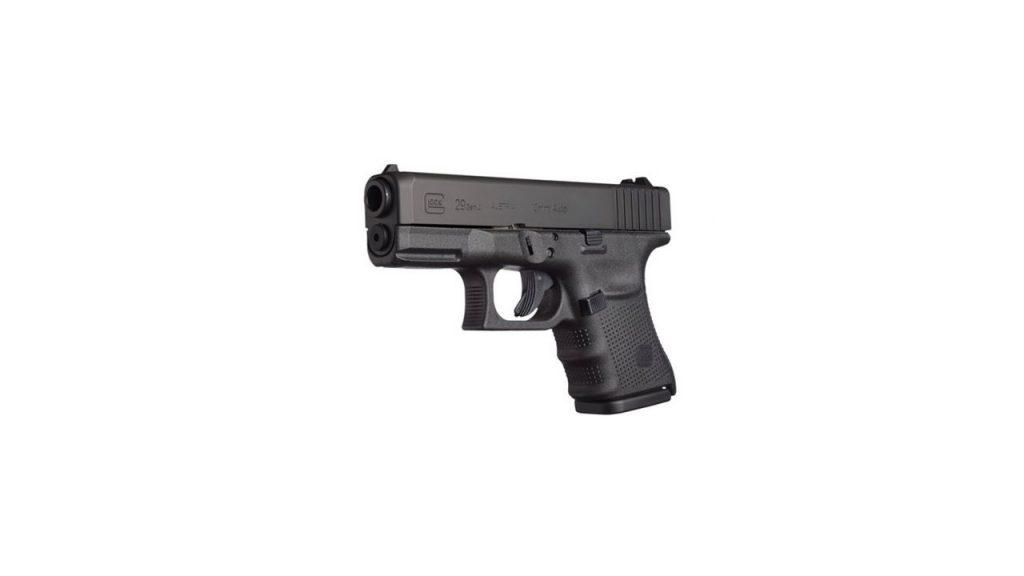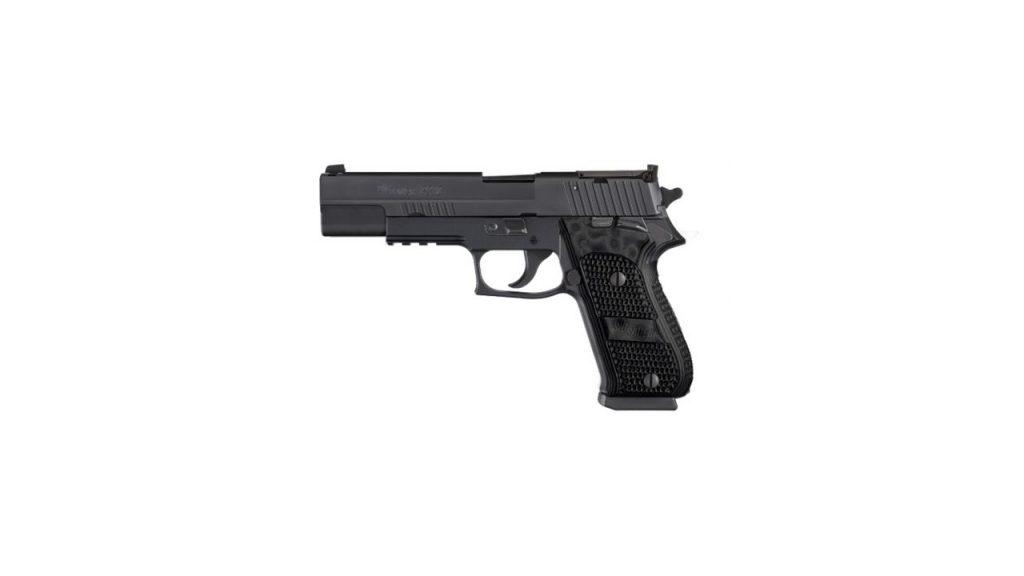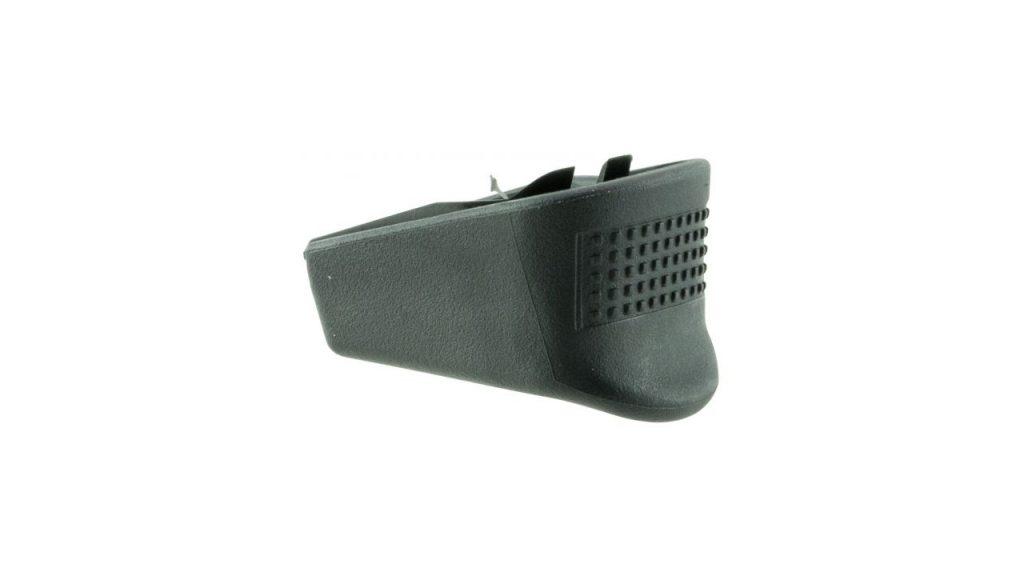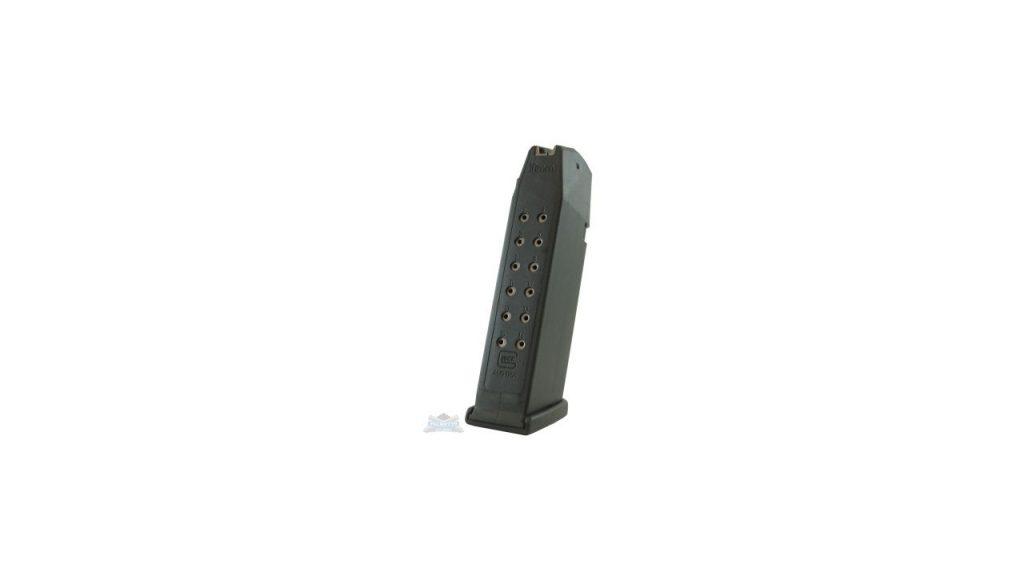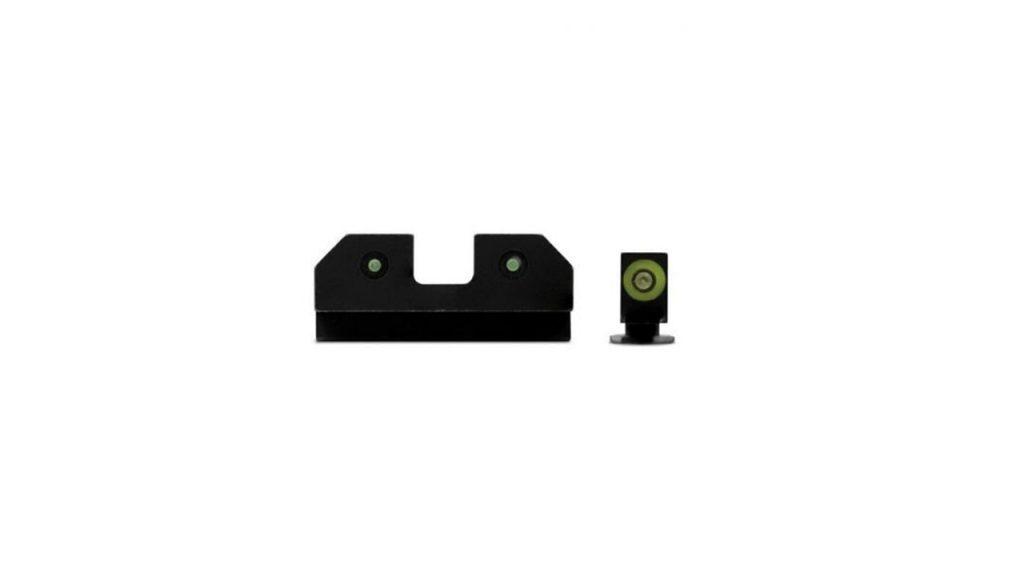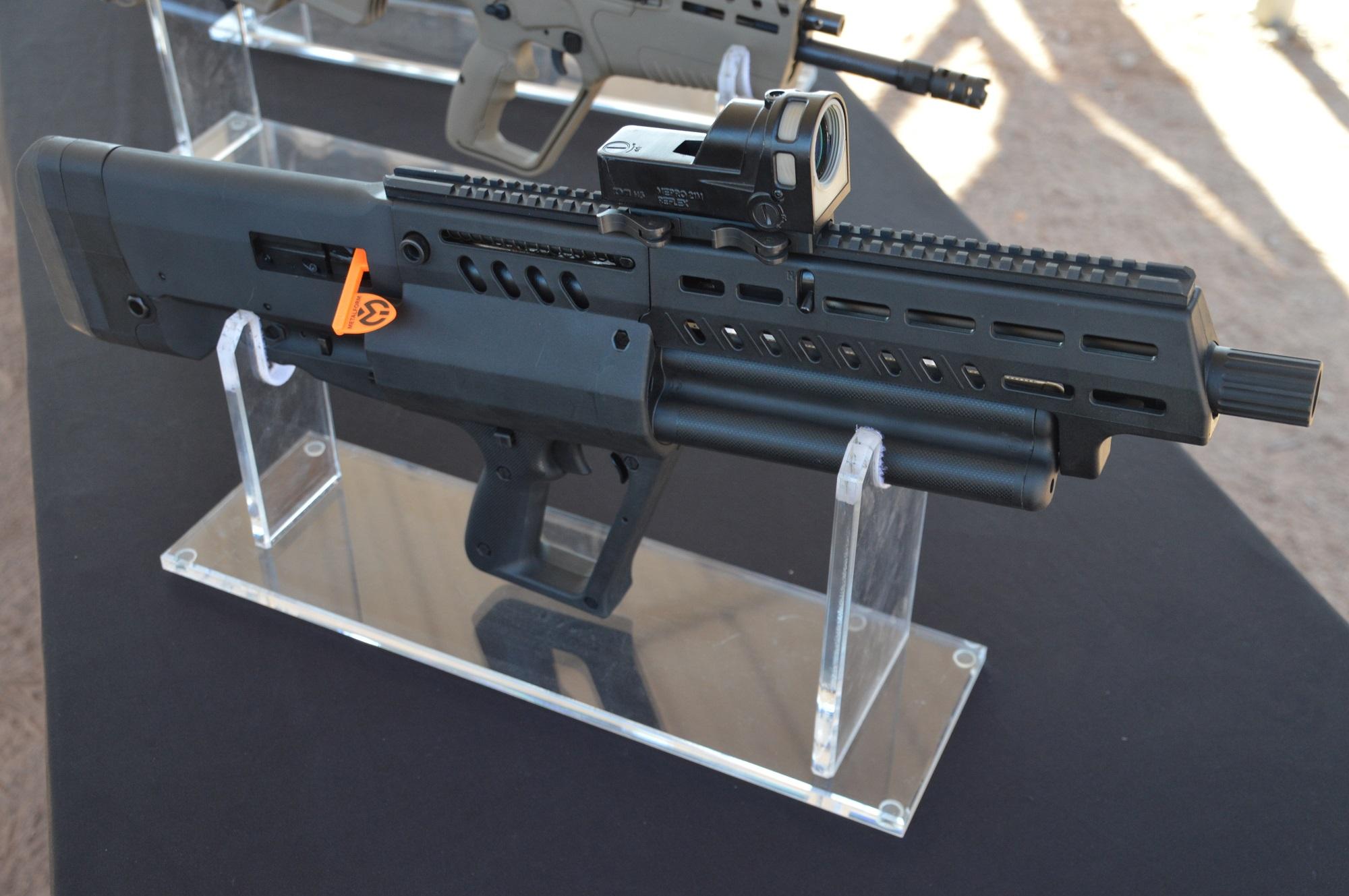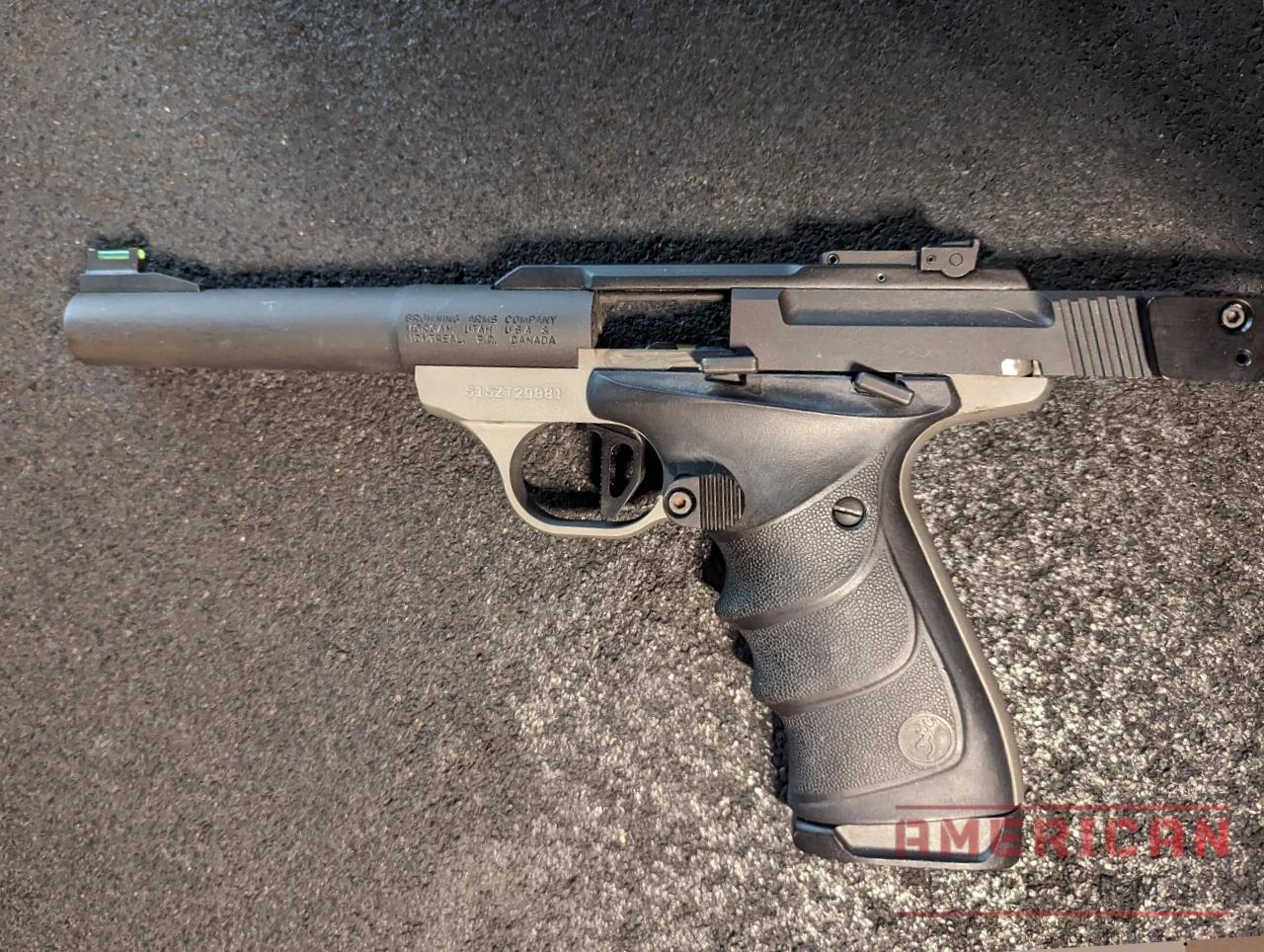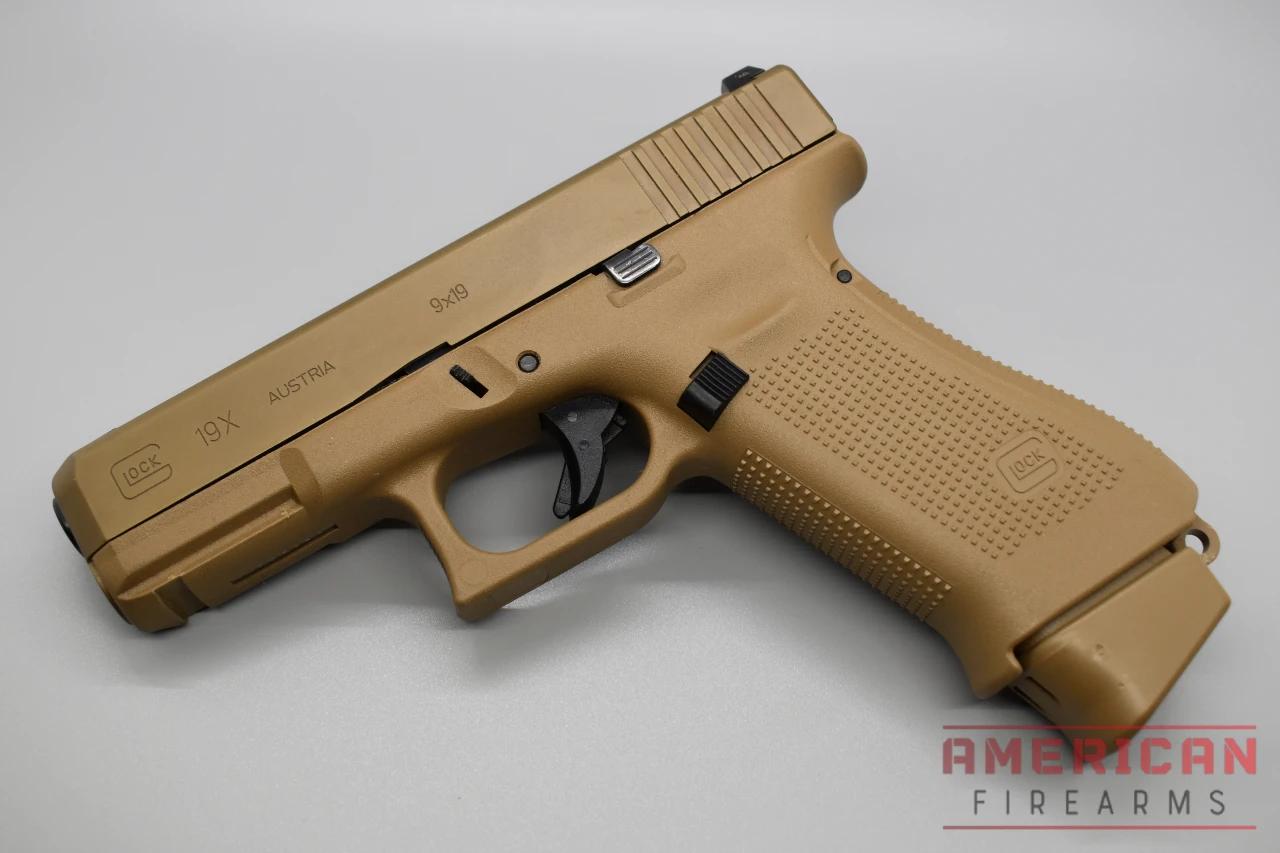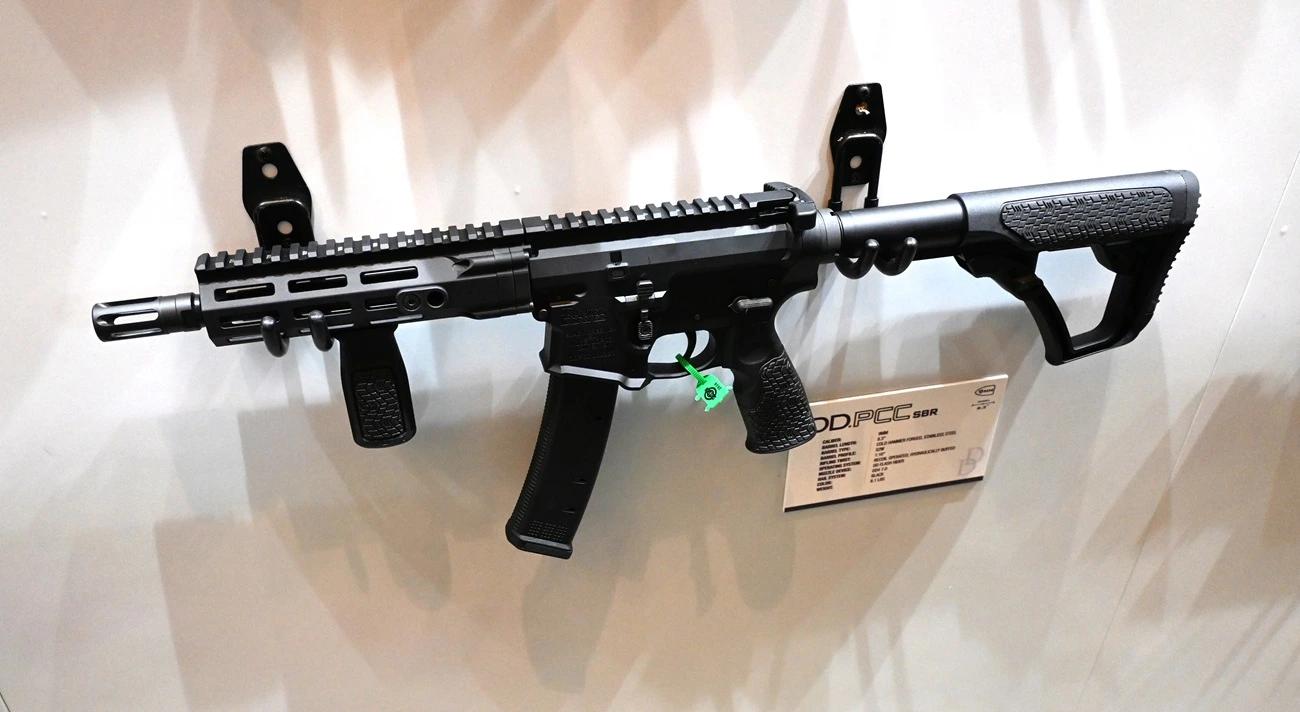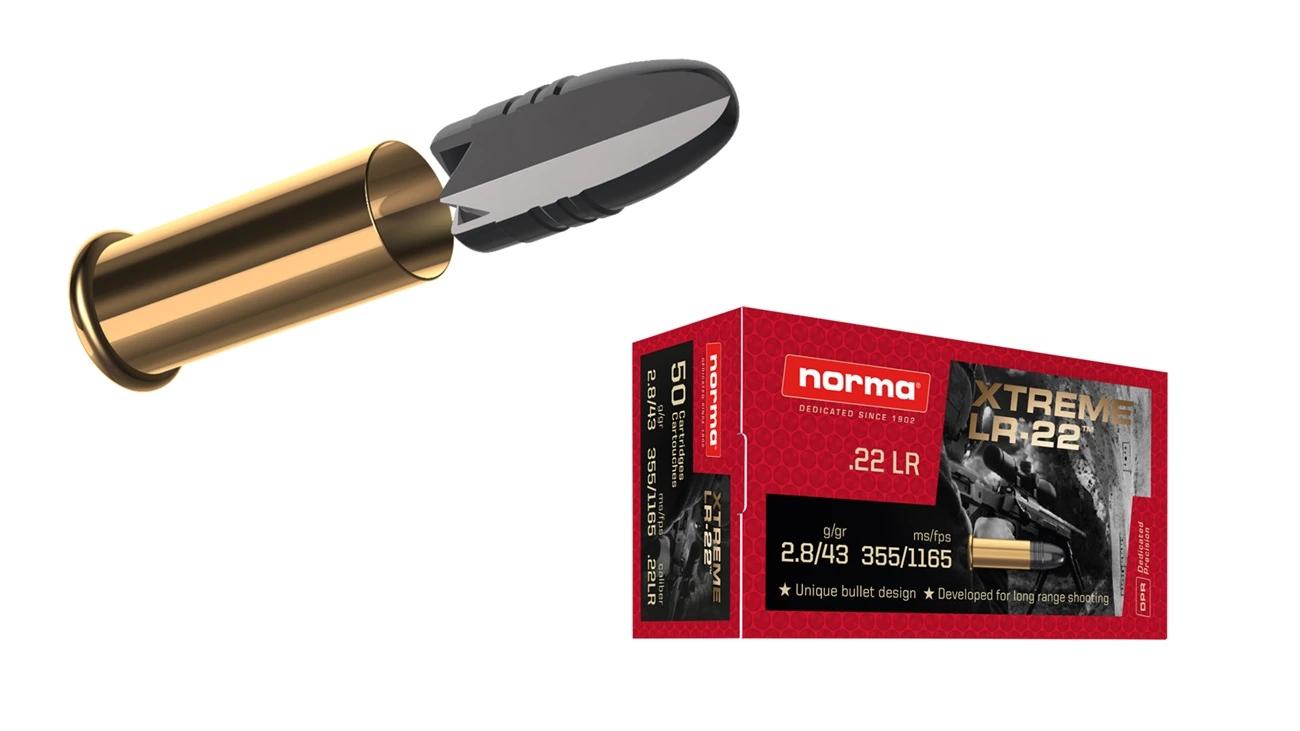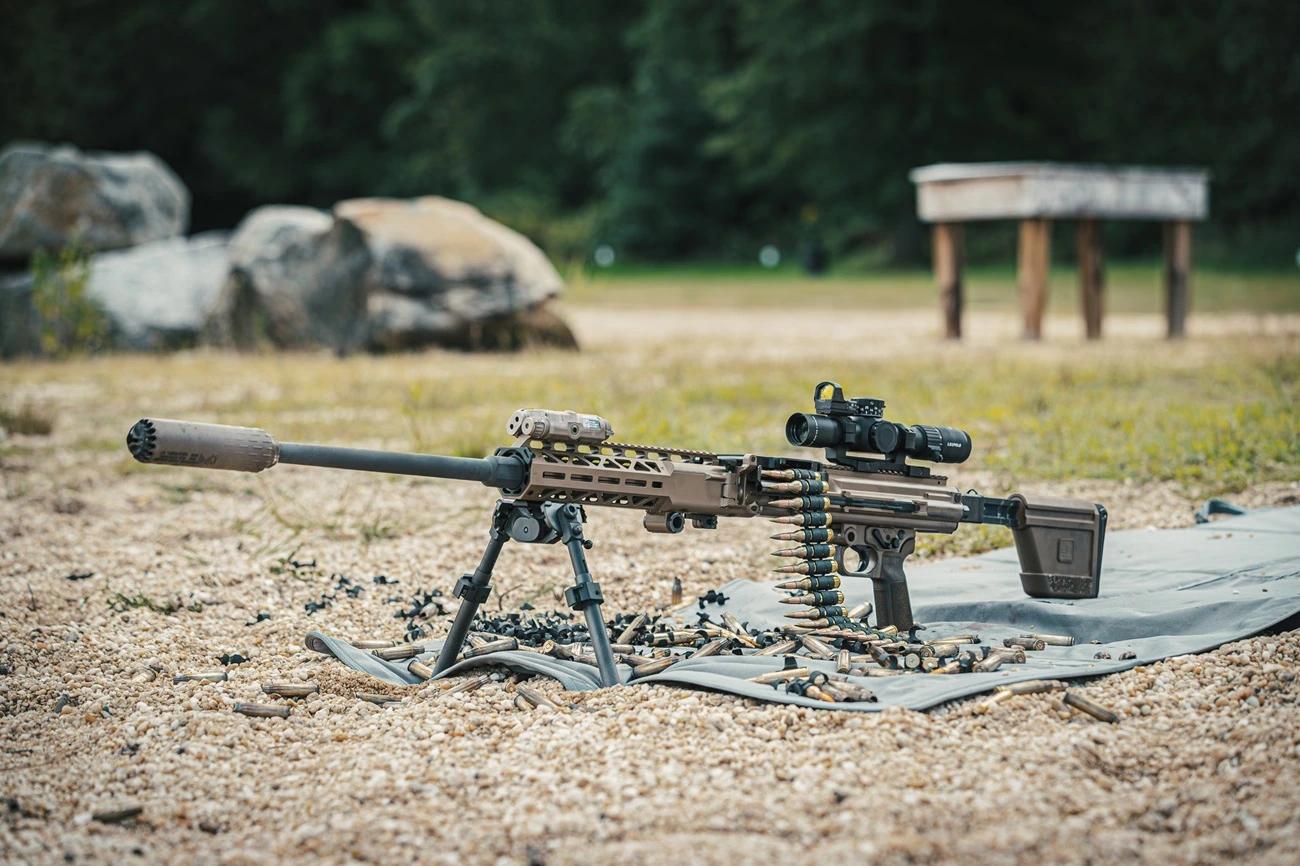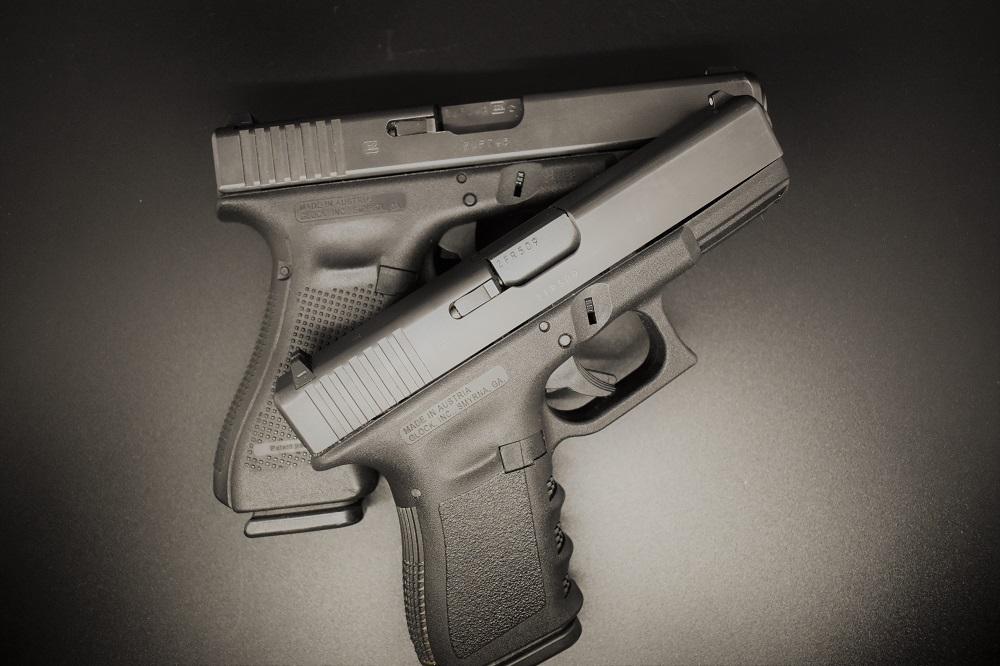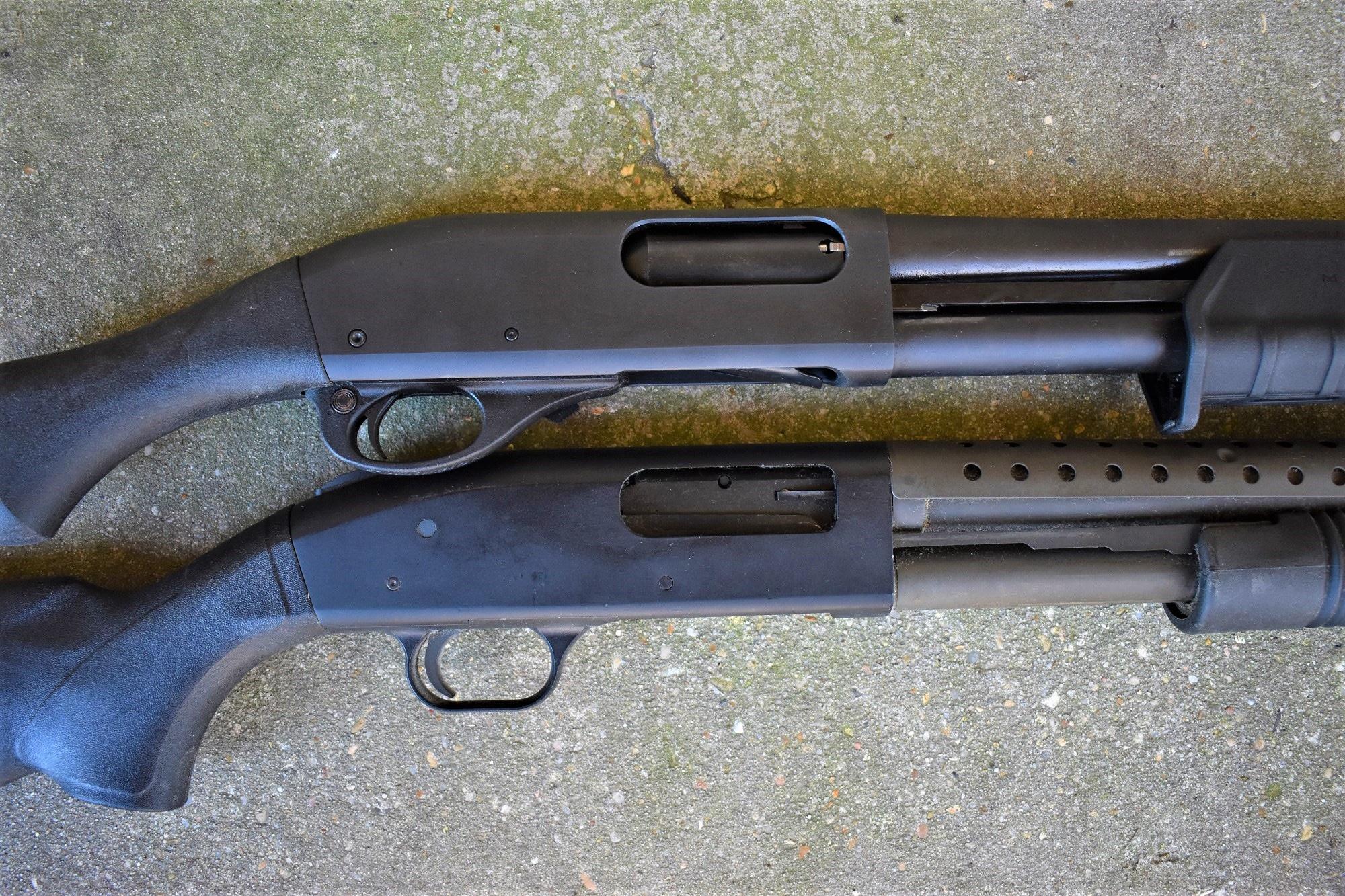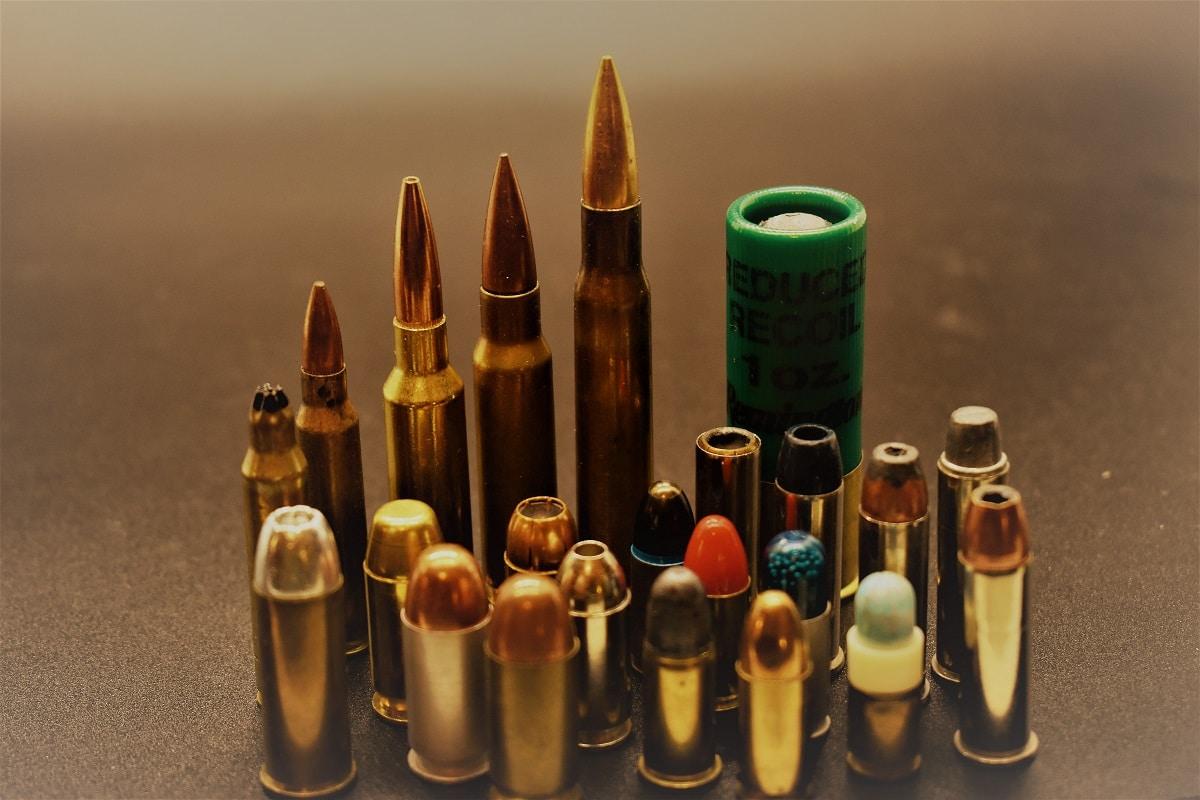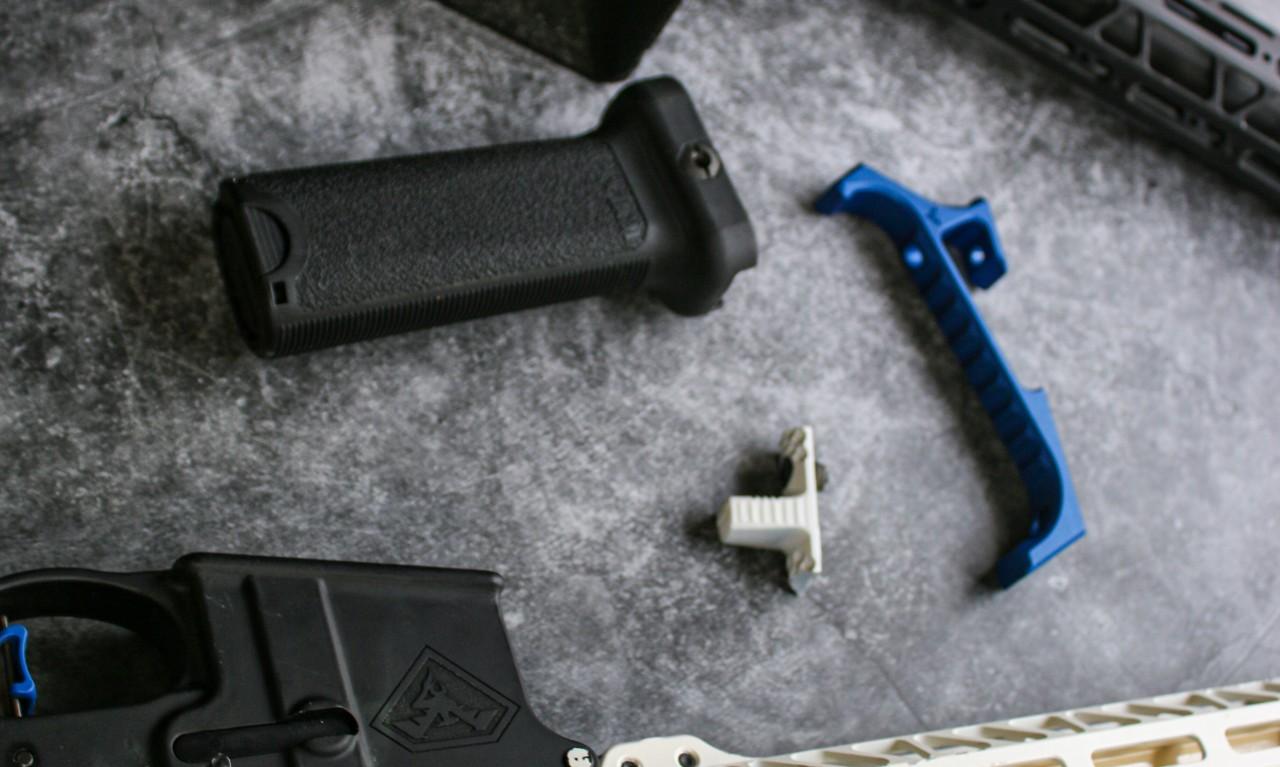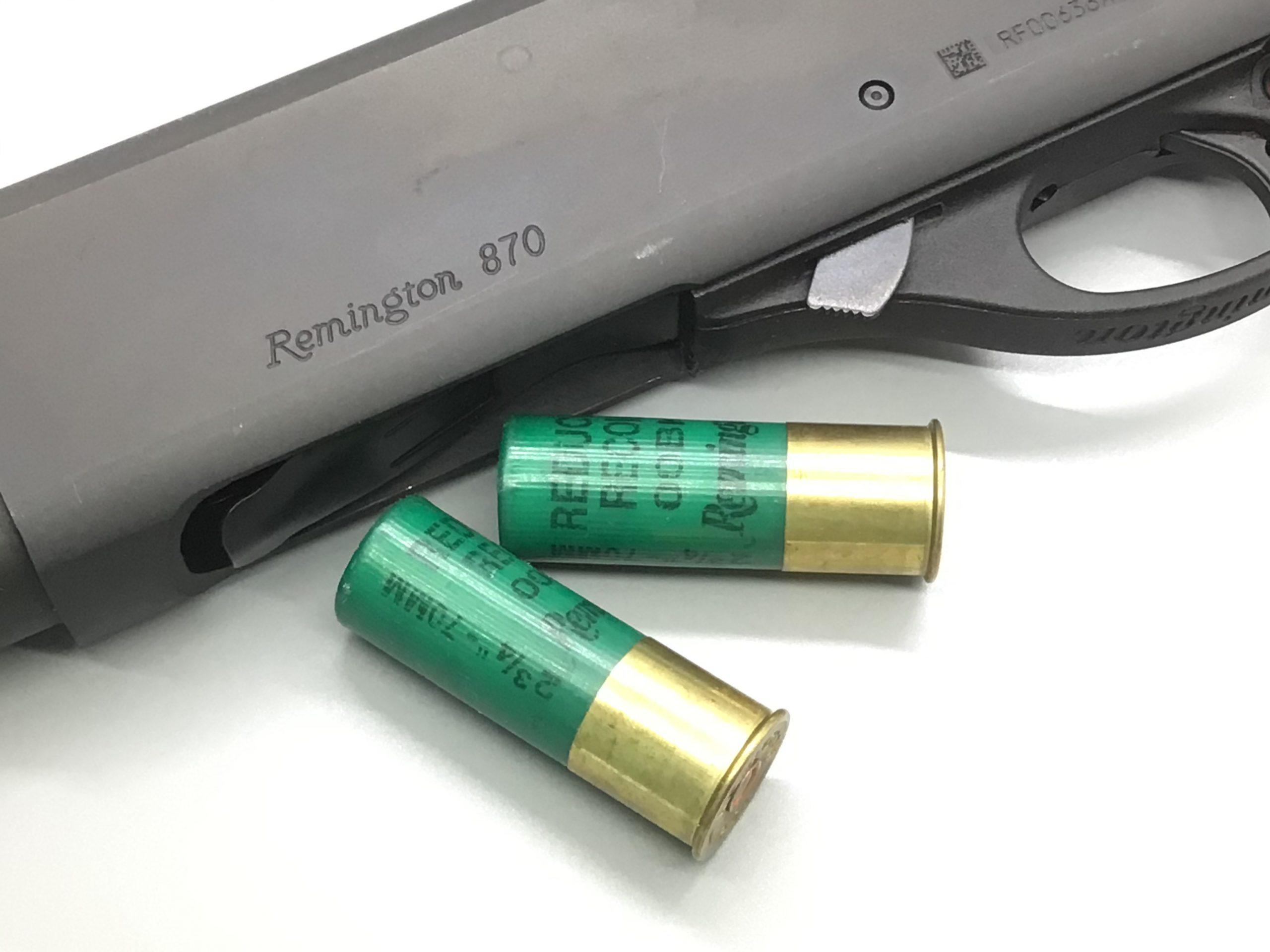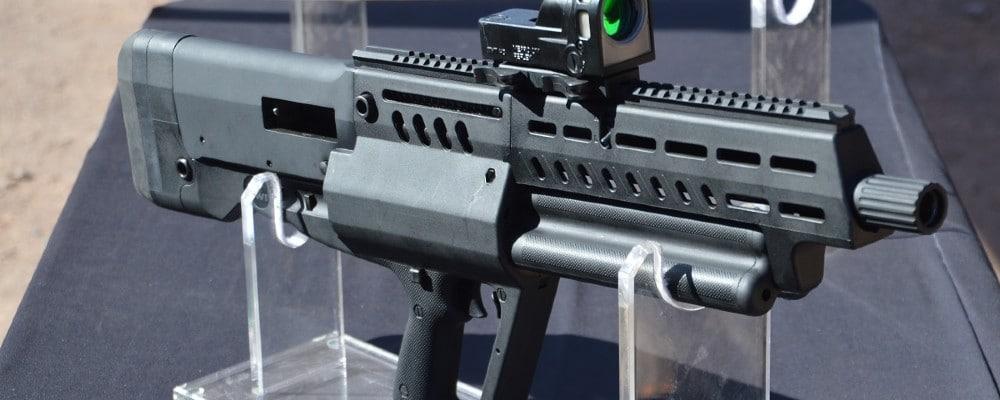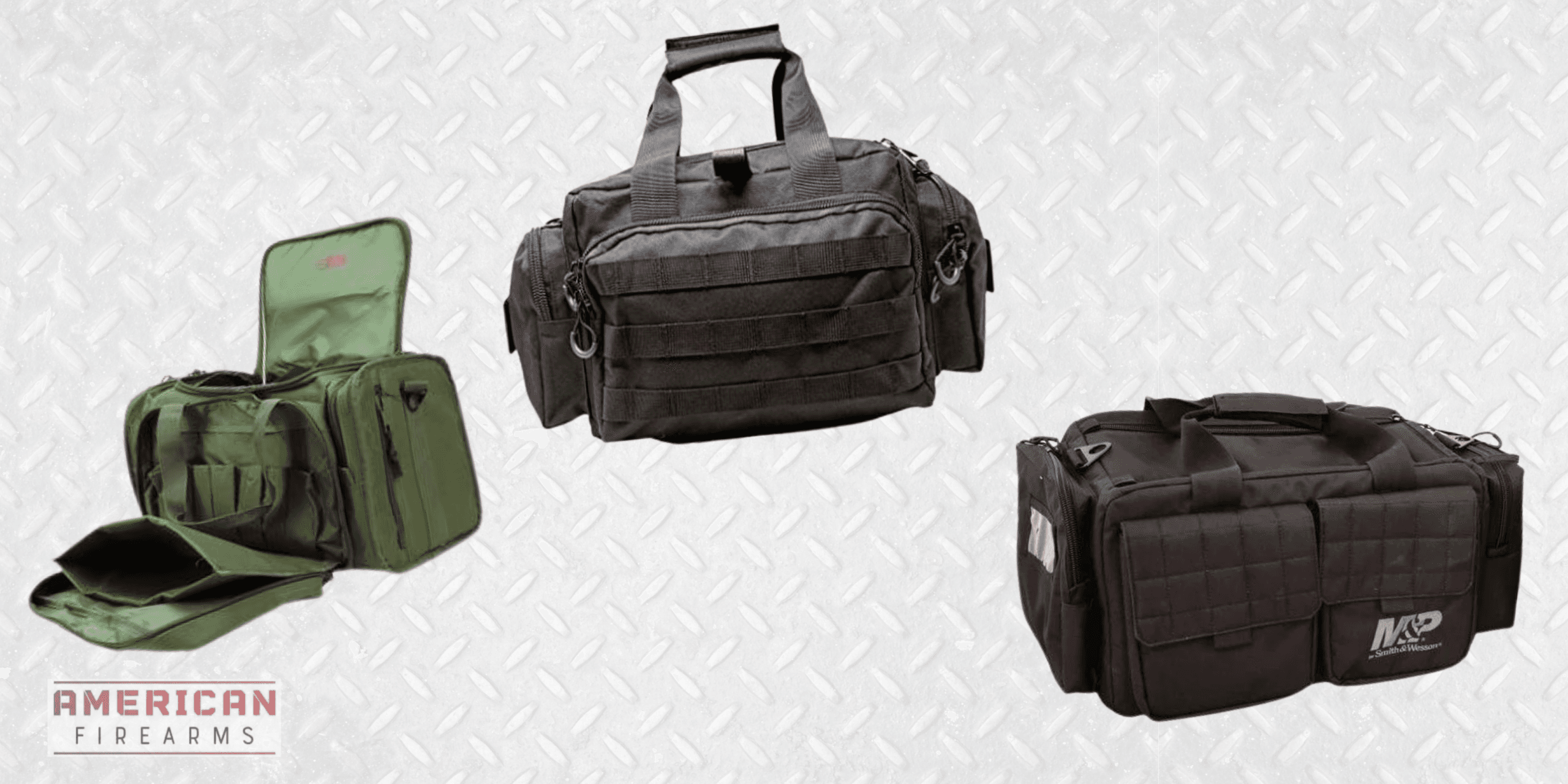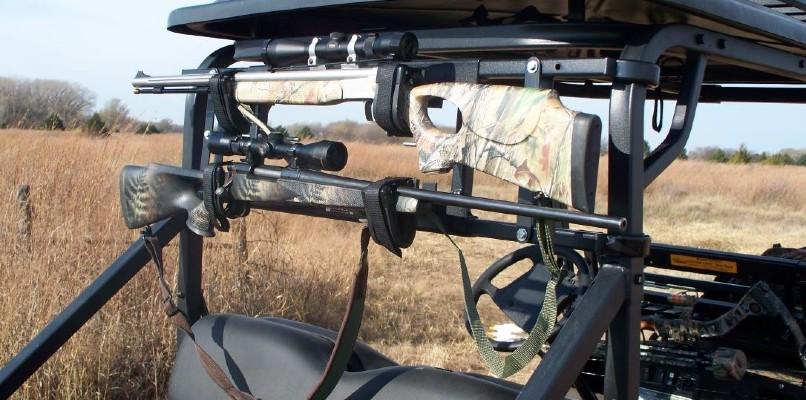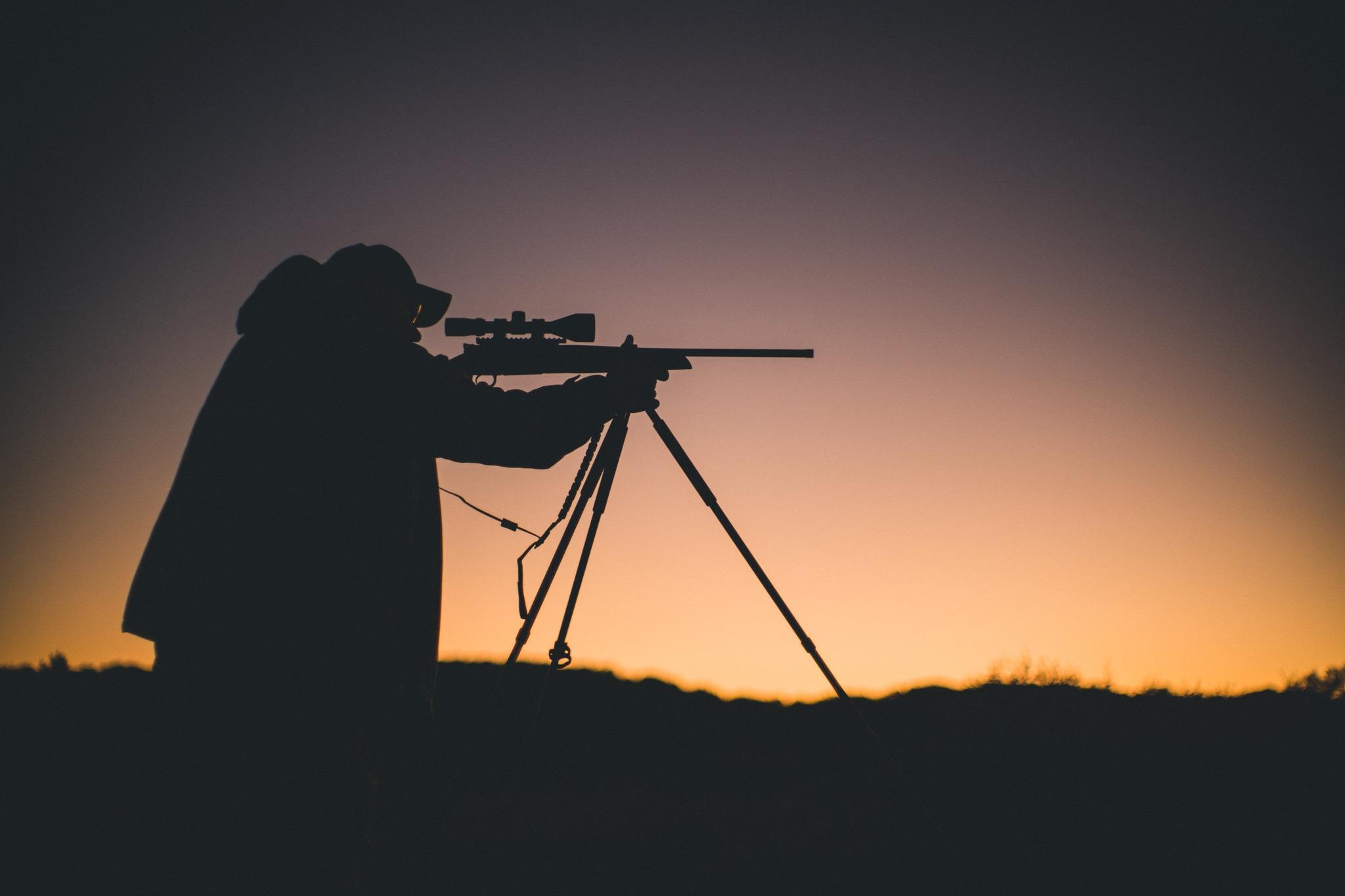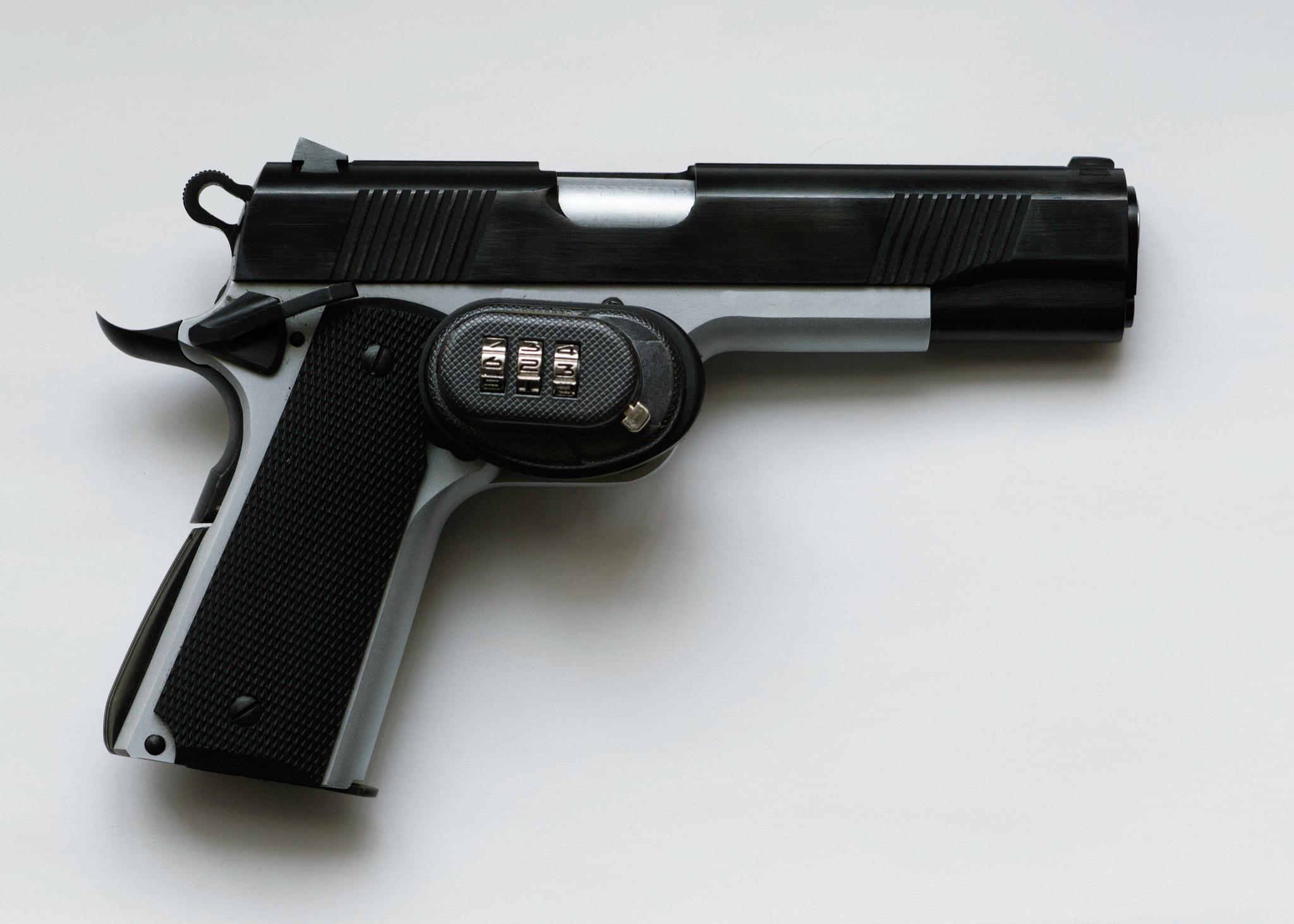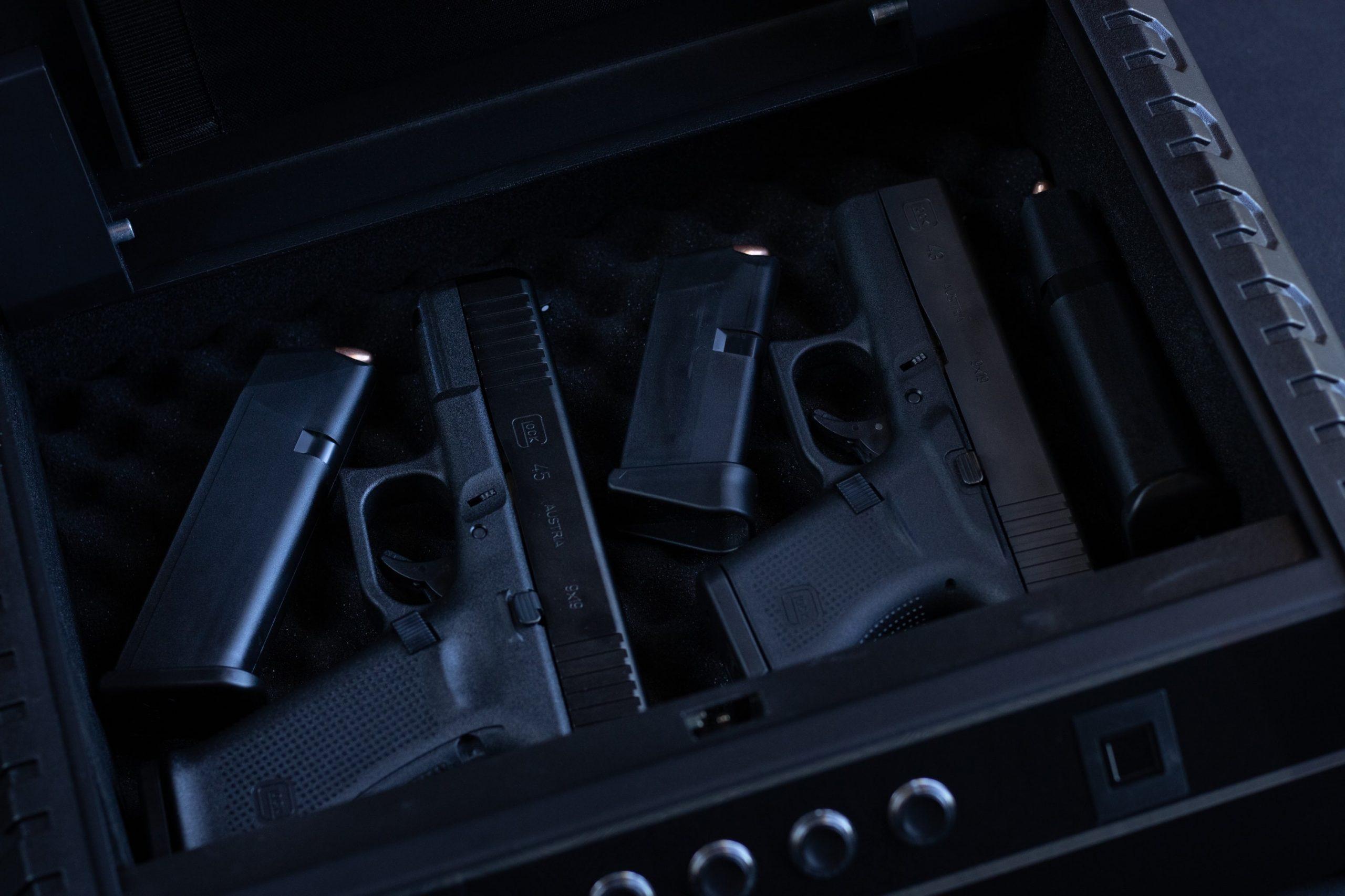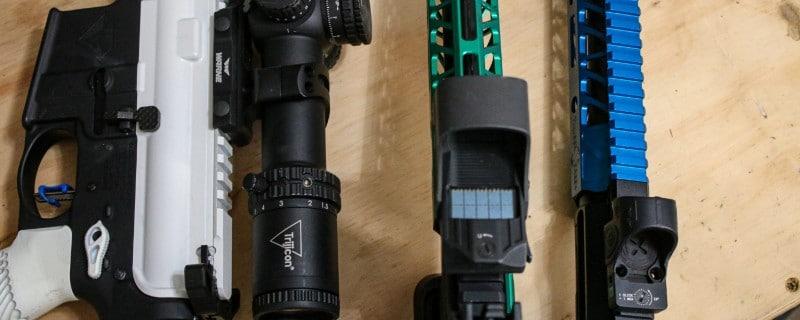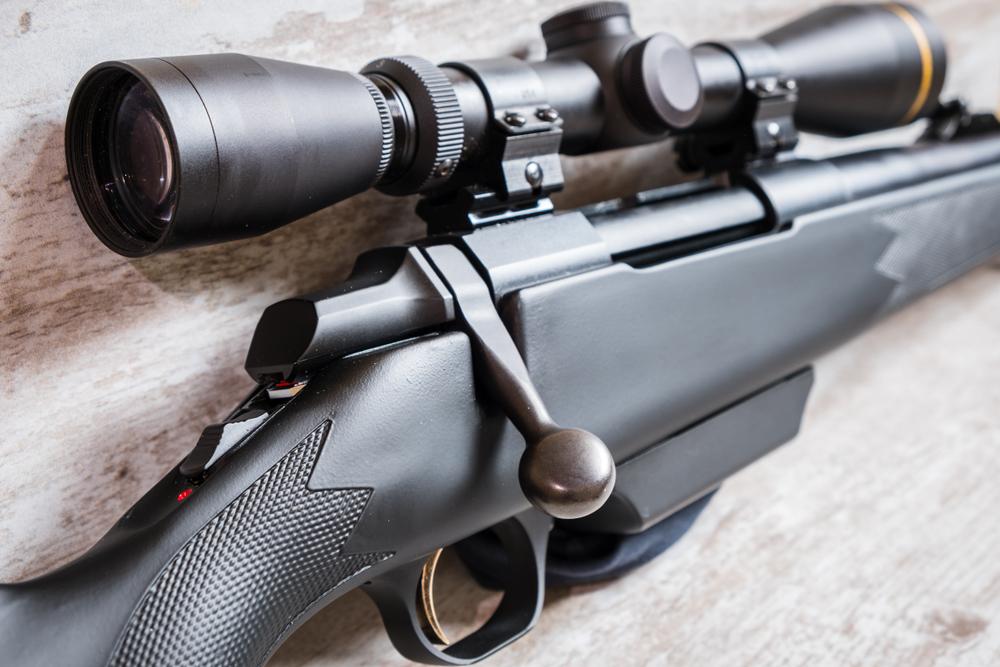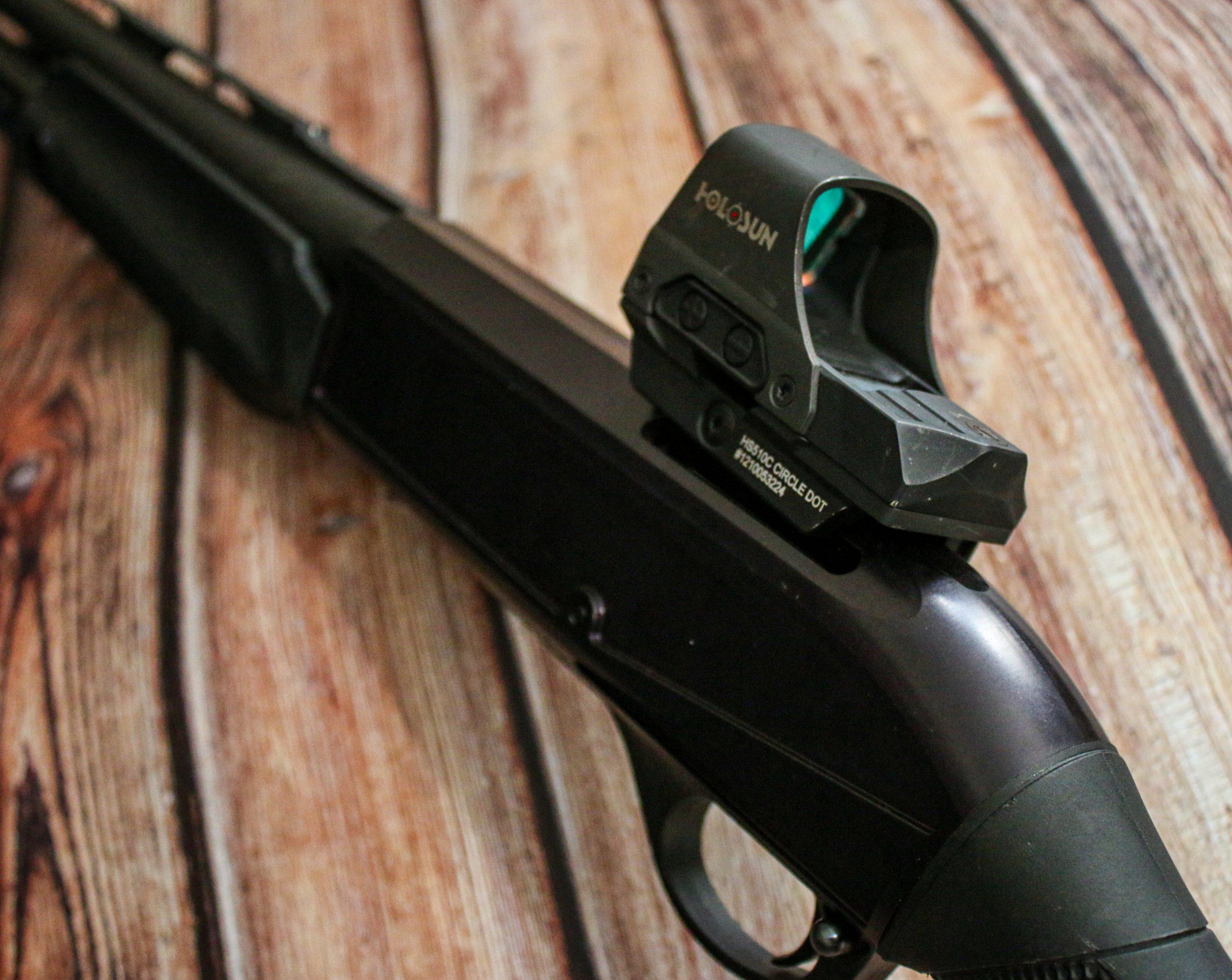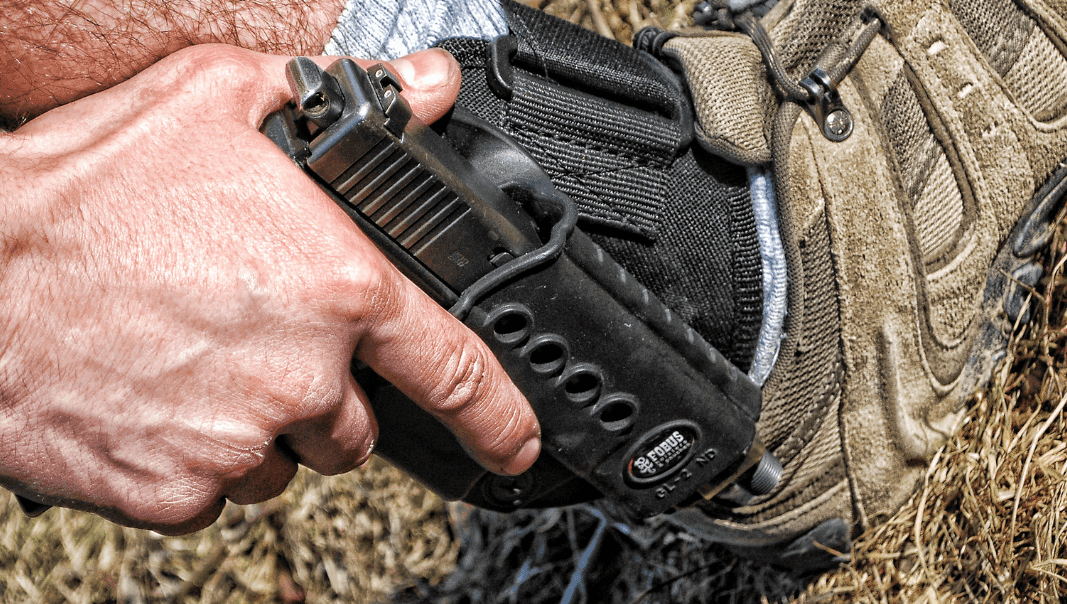The Glock 29 Reviewed [Hands-On]
Written By
Michael Crites
Licensed Concealed Carry Holder
Reviewed by
Editorial Team
Learn About The Editorial Team
Share:
Products are selected by our editors. We may earn a commission on purchases from a link. How we select gear.
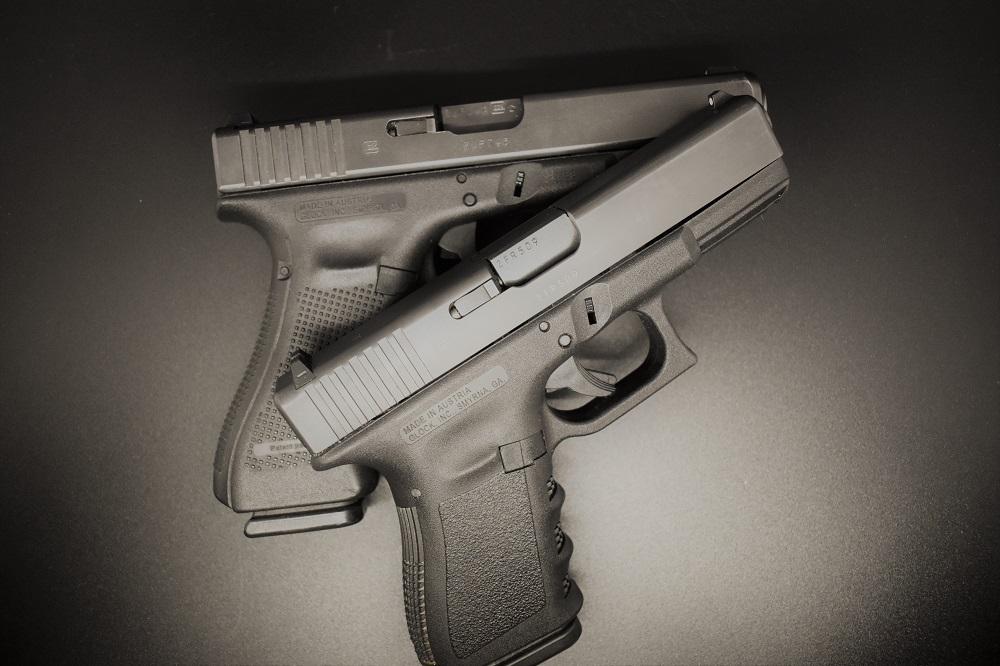
Updated
Jan 2023
The no-nonsense Glock 29, a pint-sized 10mm subcompact, is a handgun that trends towards the unique and offers a lot for the person with the will to master it.
In This Article
Basics
First introduced in 1996, the Glock Model 29 is the Austrian company’s more compact sibling to the standard-sized Glock 20 which had debuted on the market five years prior. While the G20 had a 4.6-inch barrel producing a handgun that ran 8-inches overall and hit the scales at 40 ounces when fully loaded with 15 rounds of 10mm, the subcompact Glock 29 has reduced dimensions
Glock Model 29
Likewise, the loaded weight of the G29, as it uses a chunky 10-shot magazine, is 32 ounces– fully a half-pound lighter. In another bonus, the G29 is an inch shorter in height than the G20 as it has a cutdown grip frame when stacked against its bigger brother.
With that, the G29 is on par with Glock’s other sub-compact offerings such as the 9mm G26 and.40 S&W caliber G27and it’s smaller ideal size making it suitable for concealed carry.
This is opposed to the G20 and even larger G40, which are 10mm designs Glock has long pitched to the hunting market rather than to personal defense.
Models: The Glock 29 Gen 4
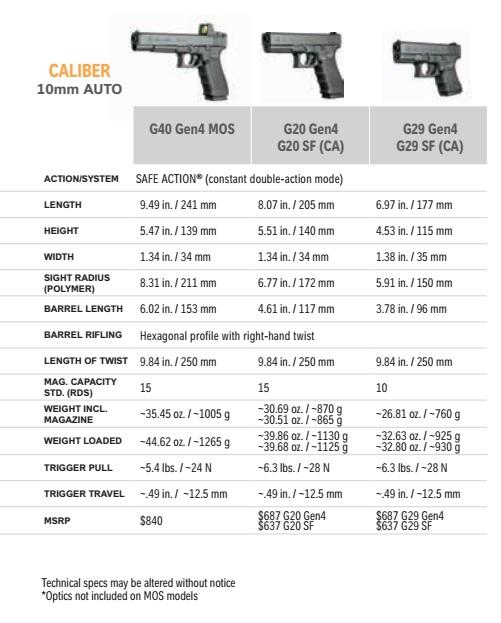
When first delivered to the market in the 1990s, the G29 debuted Glock’s 3rd Generation format including hexagonal rifling in the barrel, as well as recessed thumb rests and finger grooves on the grip. Early models did not have an accessory rail for items such as weapon-mounted lights and lasers although this soon changed.
At first offered in any color scheme you wanted as long as it was black, around 2004 a short run of olive drab models hit the market, ideal for hunters who were looking to carry the gun in the woods as a personal defense piece in bear country.
Another take on the Gen 3 Glock 29 was the SF, or short frame, series, which came out in 2009. While keeping the same features as the original model, the G29 SF was whittled down slightly, with a shorter grip dimension and updated ergonomics, enabling users with smaller hands to better reach the trigger and mag release.
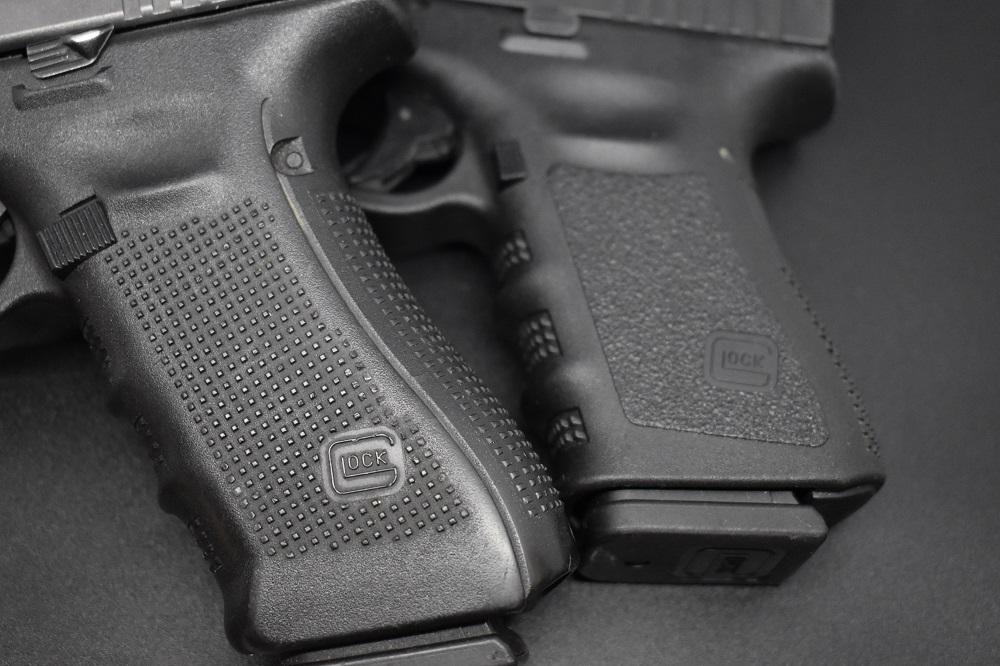
The most modern version of the G29 — the Glock 29 Gen4 series — debuted in 2012 and this latest version of the Glock 29 Gen4 offers superior versatility over previous the gun that first hit dealer’s shelves two decades prior.
While there are still recessed thumb rests, finger grooves and an accessory rail, the pistol’s grip was changed considerably through what Glock terms their Rough Textured (RTF-4) frame — an aggressive grip pattern with modular interchangeable backstraps that can adjust to best fit the user’s hand, making for a controllable pistol even when gloved.
There were also mechanical changes to the gun, including an enlarged magazine catch that is reversible from left to right, a dual recoil spring assembly, and a new trigger system that takes a lot of the “mush” out of the one used by the earlier Gen 3 pistols.
While Glock announced a Gen 5 update to their pistols in 2017– an evolution that has over 20 design modifications from their predecessors, including the GLOCK Marksman Barrel, nDLC finish, ambi slide stop lever, the removal of finger grooves, and addition of a flared mag-well– the company hasn’t delivered those mods to any model of their 10mm guns, leaving fans of “The Centimeter” to live in a sort of throwback world of Gen 3 and Gen 4 pistols only.
Why is the Glock 29 10mm?
Designed by Colonel Jeff Cooper, inventor of the modern shooting method and a fan of combat pistols, in conjunction with the Swedish ammo giant Norma Precision, the 10mm Auto made its debut in the early 1980s.
Offering magnum performance in a cartridge size small enough to fit into an ultra-reliable semi-auto handgun, the round was larger than the oft-derided 9×19 mm Parabellum and smaller in diameter than the vaunted albeit prone-to-jam .45 ACP.
While the 10mm Auto got off to a slow start as Cooper’s flagship gun, the Bren Ten, suffered from manufacturing issues unrelated to its round, by 1990, both Colt and Smith & Wesson were producing guns chambered for 10mm– the Delta Elite and the Models 1006, respectively– and the FBI was taking a hard look at its use.
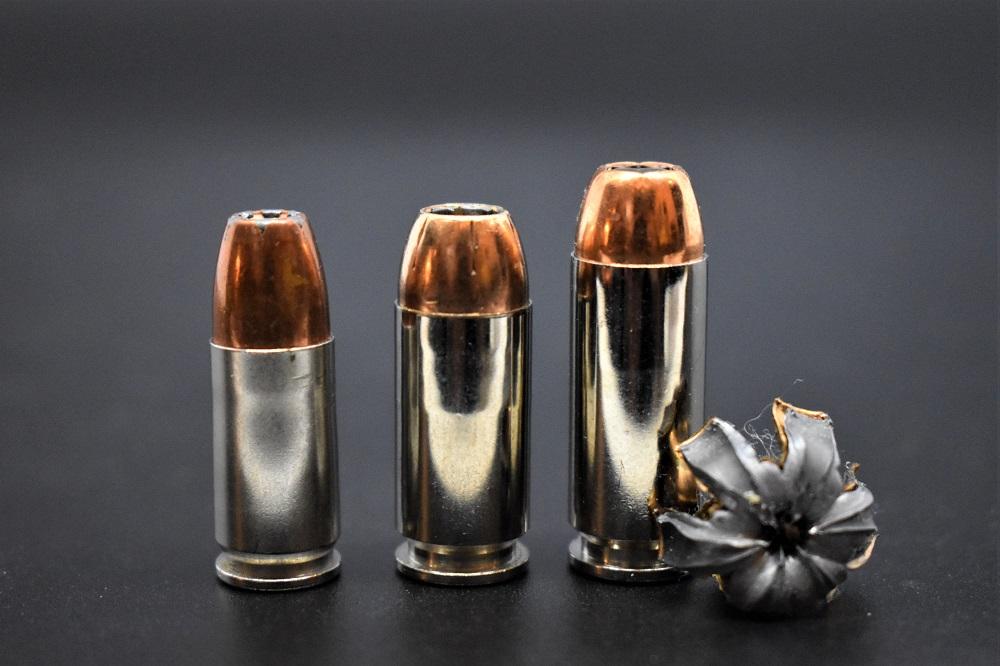
Besides the FBI, who use the round for their Hostage Rescue Team, the 10mm has become a favorite with other niche groups. Accurate and with multiple applications for both hunting and self-defense, the elite military unit in the most remote and dangerous outpost in the world– the Danish Navy’s sled patrol in frozen and polar bear-infested Greenland– carry a Glock 20 while “walking the beat.”
Officers in many rural areas prone to grizzlies likewise depend on a 10mm handgun, typically a Glock, for similar reasons as do hunters who stray into likely bruin territory during the season.
If it is likely to stop a hosed-off bear when coupled with proper shot placement, it is easy to see why the 10mm makes a formidable personal protection round.
A decidedly hosed-off bear
Your Bullet Mileage May Vary
Cooper’s 10mm Auto can sometimes get a bad rap when it comes to price, availability, and felt recoil/observed muzzle flash. This is because the cartridge is not as common as rounds such as 9mm and .38 Special and is loaded to a more impressive power factor.
However, in recent years, with more and more gun makers cranking out new 10mm models, the caliber is making a serious comeback and now is perhaps more popular than ever before. This has sparked a push by ammo makers to develop and market new loads to meet the growth in user demand, which in turn has produced a varied field for 10mm fans to choose from.
These can vary from low-recoil light loads which are more of a spicy .40 S&W such as Buffalo Bore’s low flash loads to flat-out brutal Lehigh Defense Xtreme Penetrators. Truly the salad days to be a Centimeter enthusiast!
Buffalo Bore's low flash loads
In the past, many 10mm users have taken up the hobby of handloading their own rounds, both to tweak performance and cut down on prices as the price of bullets, primers, and powder is comparable to other handgun cartridges, and once used brass can be had for cheap– especially if it is your brass.
While this is always an option, one curiosity about the recent national ammo shortage is that factory 10mm is often one of the few loads left on the shelf these days.
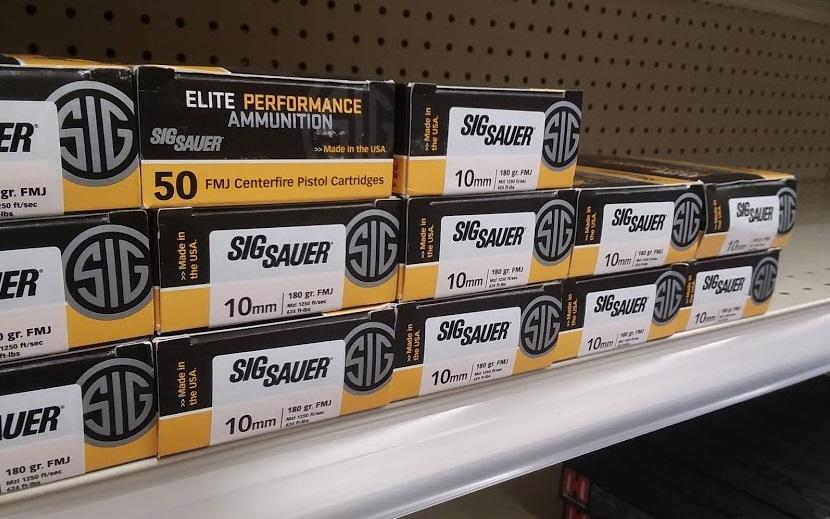
Carry-Sized
Since its inception, the 10mm Auto was intended for use with a full-sized heavy-framed handgun– after all, Col. Cooper, the man who wish casted it into existence, was a fan of M1911 Government Issues.
With that in mind, today most pistols that are chambered for the round remain M1911-style single-actions such as the Dan Wesson Kodiak, Kimber’s Camp Guard, Nighthawk Custom’s Heine longslide, Ruger’s SR1911, and the Sig Sauer Spartan series.
Leaving the cult of John Browning/Jeff Cooper in the rearview, 10mm pistols like the Sig Sauer P220 and Springfield Armory XD-M are only marginally smaller.
When it comes to more compact models in 10mm that aren’t custom shop builds, only a few pistols spring to mind. EAA’s Tanfoglio Witness Compact, based on the tried-and-true CZ 75 platform, is available in both steel and polymer-framed models.
Still, it has some downsides when compared to the Glock 29, as it is a hammer-fired design with a shorter barrel and longer overall length. The next closest 10mm that you could call concealable is Ruger’s GP100 3-inch distributed by Talo. However, keep in mind that this wheel gun is a six-shooter that runs a beefy 8.5-inches overall– which is as long as an M1911 and is just as heavy.
The G29’s hammerless design minimizes the possibility of snagging clothes and other objects during concealed carry — or in open carry with an outer garment that can get in the way. The Witness and GP100 can’t say the same thing.
Bottom line, the Glock 29 is hands down the best 10mm CCW handgun made– largely because it has so little effective competition.
Ergonomics
The Glock 29 is not your average range plinker, especially with full-power ammo. The reason for this is that the recoil of 10mm Auto is somewhat notorious in some circles.
While it is the most diminutive handgun on the market chambered for the caliber, the G29 nonetheless has the ergonomics and geometry to tackle it, especially with those using a proper two-handed grip.
This goes back to Mr. Glock’s early experiments with the P80, his first handgun that led to the G17. Developed to win an Austrian army tender for a durable pistol that could prove accurate and simple to master for draftee recruits who had little extra time to train– the Bundesheer only drafted conscripts for six-month initial tours then released them to the reserves – Glock’s prototype handguns used a much different grip angle to help make the gun easy to control and natural to aim.
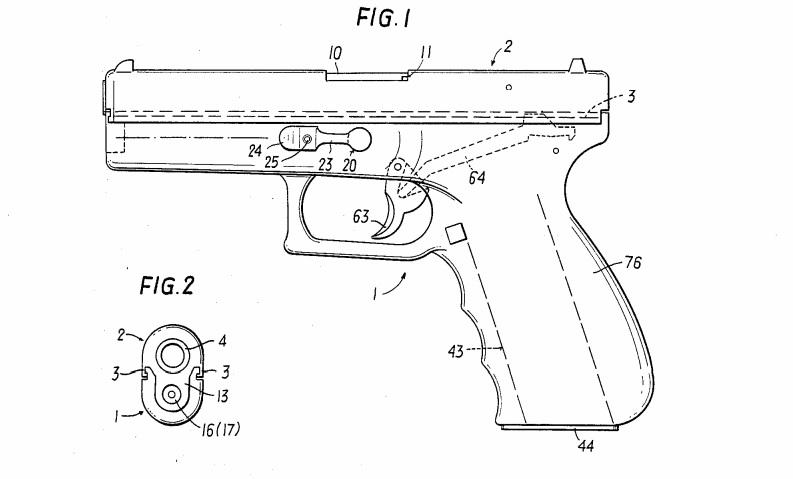
This natural grip design, some 22-degrees off square compared to the more traditional 18-degree angle used on many other combat pistols, has consistently delivered and remained a facet of the Glock series for over 40 years. Why mess with perfection, they say.
Besides the basics of grip angles, simple things like grip texture and modular backstraps have been upgraded over the various generations of Glocks to provide better purchase, especially in slippery or muddy conditions or when shooting with gloved hands.
Then there are aftermarket aids to help further stack the odds in your favor.
Magazines with pinky extensions greatly help with controlling the handgun, especially in rapid-fire, as it gives them more real estate to play with. Pearce makes some of the best magazine extensions for the G29.
Finally, larger factory mags, meant for the G20 and G40, hold 15 rounds and extend from the bottom of the magwell. While they look funny, adding a few of these to your go-bag can be a great idea for Glock 29 owners.
Accuracy
Glocks as a whole utilize a low bore axis, which is defined as the center of the barrel in correlation to the frame of the handgun. In short, low is good as it helps with practical accuracy in respect to hitting the point of aim.
Speaking of point of aim, Glock pistol sights are dovetailed in at the rear while the front is held on by an easily removed hex screw that can be accessed from the underside of the slide once the pistol is field stripped.
While the company ships most models with efficient but very plain plastic sights, there is probably no larger field of aftermarket sight options than those that are available for these guns.
Reliability
If you were to look up the definition of “dependable handgun,” odds are it would just have a picture of Mr. Gaston Glock’s original 1981 patent for the system.
The first widely adopted polymer-framed handgun Glock pistols have the uncanny ability to shrug off damage, abuse, and downright negligent maintenance and come up ready to fire. While there are scores of entertaining Glock torture tests out there, keep in mind that these guns have been readily chosen for some of the hardest use on the planet by people who stake their lives on them.
Besides the adoption by the Danish Navy’s sled patrol in Greenland, the militaries of Finland, Norway, and Sweden– in other words all the Scandinavian countries with landmasses to defend above the Arctic Circle– depend on Glock handguns as their primary sidearms and in each case, they were selected after grueling tests in extreme conditions.
Sources
- Google Patents, US4539889A – Automatic pistol with counteracting spring control mechanism
- laststandonzombieisland, The Glocks of Greenland, September 22, 2015
- Gun Digest, Bill Vanderpool, 10mm Handguns and the FBI, July 25, 2018
- YouTube search results, Glock torture test
Sign up for our newsletter
Get discounts from top brands and our latest reviews!

